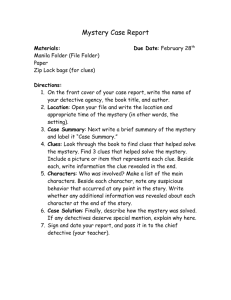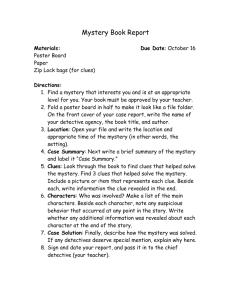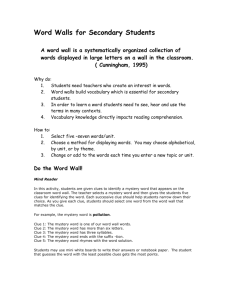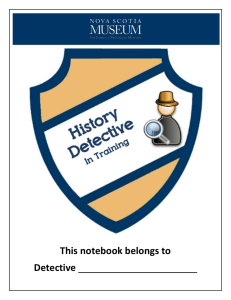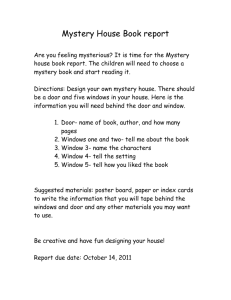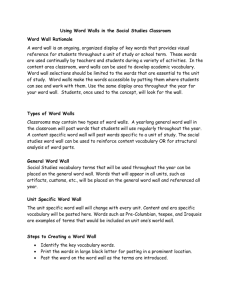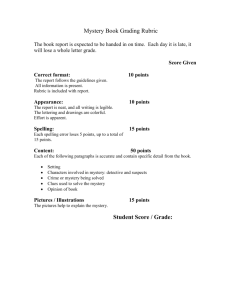Teachers Say Word Wall Works
advertisement
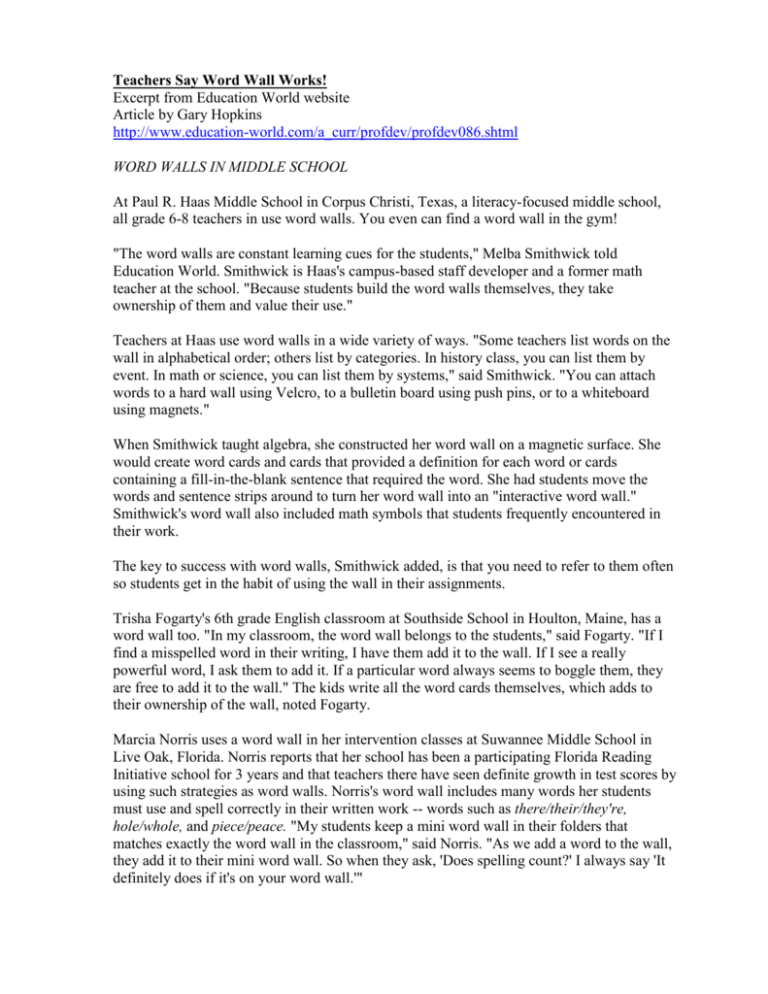
Teachers Say Word Wall Works! Excerpt from Education World website Article by Gary Hopkins http://www.education-world.com/a_curr/profdev/profdev086.shtml WORD WALLS IN MIDDLE SCHOOL At Paul R. Haas Middle School in Corpus Christi, Texas, a literacy-focused middle school, all grade 6-8 teachers in use word walls. You even can find a word wall in the gym! "The word walls are constant learning cues for the students," Melba Smithwick told Education World. Smithwick is Haas's campus-based staff developer and a former math teacher at the school. "Because students build the word walls themselves, they take ownership of them and value their use." Teachers at Haas use word walls in a wide variety of ways. "Some teachers list words on the wall in alphabetical order; others list by categories. In history class, you can list them by event. In math or science, you can list them by systems," said Smithwick. "You can attach words to a hard wall using Velcro, to a bulletin board using push pins, or to a whiteboard using magnets." When Smithwick taught algebra, she constructed her word wall on a magnetic surface. She would create word cards and cards that provided a definition for each word or cards containing a fill-in-the-blank sentence that required the word. She had students move the words and sentence strips around to turn her word wall into an "interactive word wall." Smithwick's word wall also included math symbols that students frequently encountered in their work. The key to success with word walls, Smithwick added, is that you need to refer to them often so students get in the habit of using the wall in their assignments. Trisha Fogarty's 6th grade English classroom at Southside School in Houlton, Maine, has a word wall too. "In my classroom, the word wall belongs to the students," said Fogarty. "If I find a misspelled word in their writing, I have them add it to the wall. If I see a really powerful word, I ask them to add it. If a particular word always seems to boggle them, they are free to add it to the wall." The kids write all the word cards themselves, which adds to their ownership of the wall, noted Fogarty. Marcia Norris uses a word wall in her intervention classes at Suwannee Middle School in Live Oak, Florida. Norris reports that her school has been a participating Florida Reading Initiative school for 3 years and that teachers there have seen definite growth in test scores by using such strategies as word walls. Norris's word wall includes many words her students must use and spell correctly in their written work -- words such as there/their/they're, hole/whole, and piece/peace. "My students keep a mini word wall in their folders that matches exactly the word wall in the classroom," said Norris. "As we add a word to the wall, they add it to their mini word wall. So when they ask, 'Does spelling count?' I always say 'It definitely does if it's on your word wall.'" WORKING WORD WALLS "It's no longer enough for classroom walls to be attractive," says Dr. Darla Shaw, coordinator of the graduate reading program at Western Connecticut State University in Danbury, Connecticut, and a frequent workshop presenter on such topics as word walls. "A working word wall may be only an inanimate object, but if properly developed, it can bring real life to a [classroom]." For teachers who have not used a word wall before, Shaw has some "words" of advice: Word walls should be student generated, not commercially prepared. New information should be added on a regular -- even daily -- basis. Content-area material from the curriculum rather than randomly selected words should be utilized. Word walls should be referred to often so students come to understand and see their relevance. Word walls are a group effort; allow students to make suggestions for content. "Children who learn in a classroom with a working word wall have a distinct advantage over students who don't have such a resource in their room," said Shaw. University of Pittsburgh LEADERS website –Tips for a Successful Word Wall http://www.education.pitt.edu/leaders/faq/wordwallnutshell.aspx A teacher must "do" the word wall, rather than just "have" a word wall. Most teachers add 5 new words to the word wall a week. It is essential that you do many different types of activities with words of the week for the children to be able to spell, read and write them well. Students should be expected to spell and write the word wall words correctly. Word wall word activities should be multi-sensory experiences. All students should be able to see the word wall. However, if this is not possible, students should be able to move their seats/desks in order to see the word wall when needed. Activities for Words on a Word Wall Mind Reader Description: Students use clues to narrow down a “mystery word.” The students will: practice using words on the classroom word wall. use clues to narrow down the possibilities. Materials Needed: scrap paper; a mini whiteboard, or a mini chalkboard. writing implement (pencil, marker, or chalk) list of word wall words with clues to help students guess them Directions: In this game, students use clues to figure out a “mystery word” that appears on the classroom word wall. Provide each student with a small piece of paper; this is a great activity for recycling some of that scrap paper you have been collecting. Alternate idea: If you use mini-whiteboards or chalkboards in your classroom, this is an excellent opportunity to use them. Have students number their papers or whiteboard from 1 to 5. Then select a “mystery word” from the word wall and give five successive clues to help students identify the word. Each successive clue should help students further narrow down the words on the word wall to the special mystery word. As you give each clue, students should select one word from the word wall that matches all the clues given to that point in the game. The last clue should be the most obvious one. EXAMPLE 1: Mystery Word: calculator Clue 1: The mystery word is one of our word wall words. Clue 2: The mystery word has three syllables. Clue 3: The mystery word has more than six letters. Clue 4: The mystery word has three letters that are repeated twice in the word. Clue 5: The mystery word will complete this statement: I wanted to compute the mean of my data using a _____. EXAMPLE 2: Mystery Word: permutation Clue 1: The mystery word is one of our word wall words. Clue 2: The mystery word has more than six letters. Clue 3: The mystery word has four syllables. Clue 4: The mystery word ends with the suffix -tion. Clue 5: The mystery word means the reordering or rearranging of items in a group After you have given the five clues, have students show their papers or slates. Which student(s) guessed the mystery word with the fewest possible clues? Submitted By Shari Medley to the Education World article, Teachers Say Word Walls Work! 2004 Vocabulary Toss Description: Reinforce vocabulary with this game combining reading and basketball skills. The students will: reinforce vocabulary skills by matching words with their meanings. earn bonus points if they successfully shoot a basketball into a net. Materials Needed: mini basketball net with sponge "basketball" questions matched to words on the classroom word wall (see Before the Game below) Directions: Before the Game Purchase and set up in the classroom a mini basketball hoops that comes with a small sponge "basketball." Use masking tape to create on the floor a foul line that shots will be taken from. Prepare in advance a vocabulary activity employing words that are included on the students' word wall. Prepare at least one question for each student in the class. The following sample question formats will work nicely for that purpose: Provide a definition and ask students to identify the word-wall word that matches the definition. Provide the phonetic pronunciation (for example, pro-NUN-see-ay-shun) and ask students to say or point to the word. Provide a sentence that has one word missing; that word can be found on the word wall. Provide a synonym (a word that means the same thing) or an antonym (a word that means the opposite), and have students identify the word. Provide a rhyming word and ask students to identify the word-wall word. Provide two dictionary "guide words" and ask students to identify a word wall word that might be found on the same page as those words. (For example, the word wonderful would be found on a dictionary page with the guide words "wall - word." The Game Arrange the class into 2 to 4 teams. Ask one of the questions you prepared (see Before the Game above) of the first student on the first team. If a student identifies the correct word-wall word, that student earns a point and a chance to double his or her score (earn two points for the team) by trying to shoot a basket. A successful shot earns that second point; there is no penalty for a missed shot. If the student does not identify the correct word-wall word, pass the question to the first player on the next team. At the end of the game, the team with the most points is declared the winning team. Submitted By Melba Smithwick; the Education World article, Teachers Say Word Walls Work! 2004 No classroom should be without an interactive word wall! The power of an interactive word wall in the classroom is amazing. The key to a successful word wall is the word, "interactive." Students need to actively interact with the word wall.
